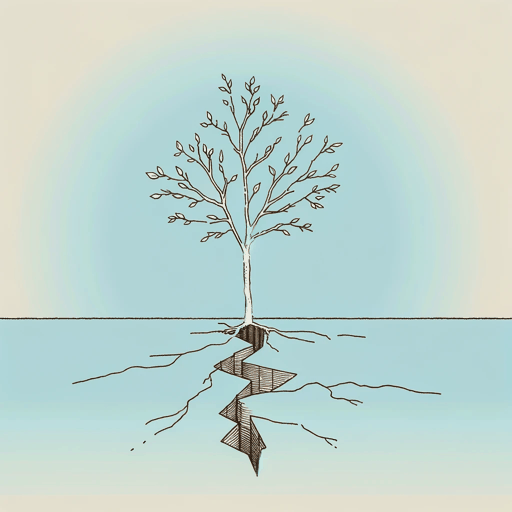65 pages • 2 hours read
Rebecca SolnitOrwell's Roses
Nonfiction | Biography | Adult | Published in 2021A modern alternative to SparkNotes and CliffsNotes, SuperSummary offers high-quality Study Guides with detailed chapter summaries and analysis of major themes, characters, and more.
Symbols & Motifs
Trees of Life: The Span of a Saeculum
While roses may be Solnit’s primary motif throughout the book, trees also function as significant symbols, not to mention magnificent examples, of natural forces at work. Solnit’s purpose in writing this book is partly to reconnect not only with Orwell’s work but with the life of this great writer. Thus, she dips into the past, trying to imagine how he lived his life and what moved him to write about certain topics. Trees function as an organic time machine:
The trees made the past seem within reach in a way nothing else could: here were living things that had been planted and tended by a living being who was gone, but the trees that have been alive in her lifetime were in ours and might be after we were gone (6).
Thus, it’s through the trees—and other living plants—that Solnit gains access to Orwell’s life and his connection to the natural world.
Solnit continues by defining the word “saeculum”:
[It] describes the span of time lived by the oldest person present, sometimes calculated to be about a hundred years. [...] Every event has its saeculum, and then its sunset when the last person who fought in the Spanish Civil War or the last person who saw the last passenger pigeon is gone (6).
Related Titles
By Rebecca Solnit

A Paradise Built in Hell: The Extraordinary Communities That Arise in Disaster
Rebecca Solnit

Hope In The Dark: The Untold History of People Power
Rebecca Solnit

Men Explain Things To Me
Rebecca Solnit

River of Shadows
Rebecca Solnit

The Faraway Nearby
Rebecca Solnit
Featured Collections
Beauty
View Collection
Books About Art
View Collection
Books & Literature
View Collection
Contemporary Books on Social Justice
View Collection
Earth Day
View Collection
National Book Critics Circle Award...
View Collection
Philosophy, Logic, & Ethics
View Collection
Politics & Government
View Collection
Popular Study Guides
View Collection
Truth & Lies
View Collection

